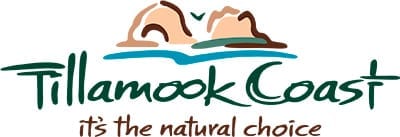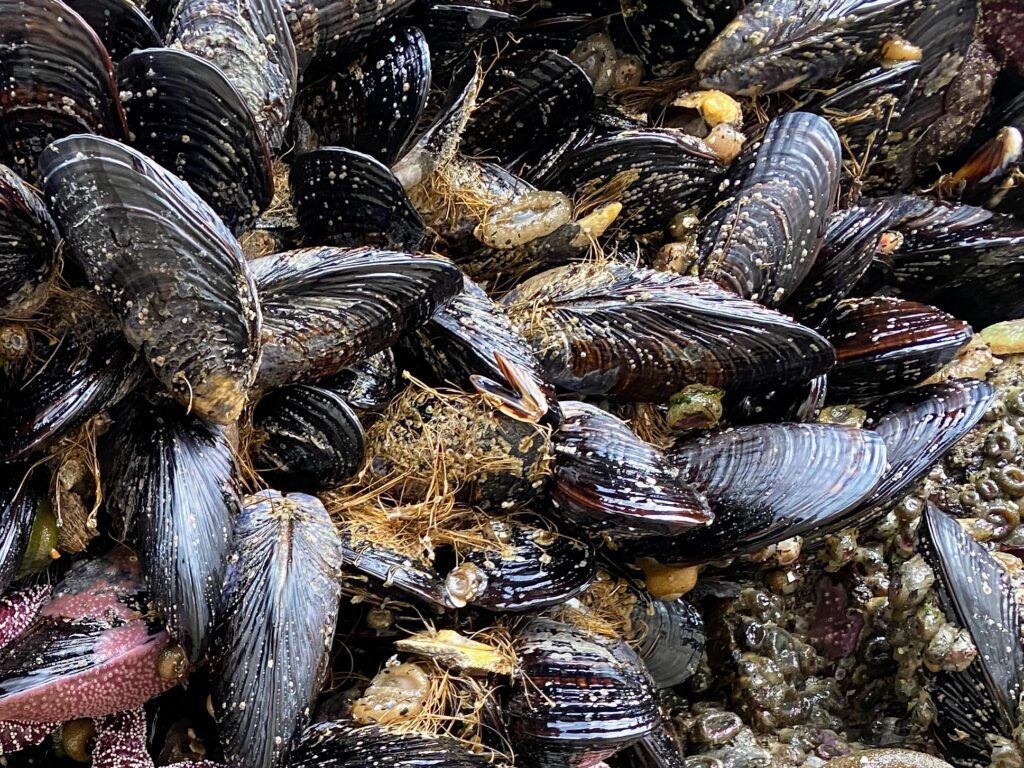Tillamook Coast Life Blog
Foraging Wild Edibles on the Tillamook Coast:
From Forest to Shoreline
Whether you’re in the forest or on the beach, the Tillamook Coast is home to an abundance of wild edibles that you can harvest year-round. We’ve espoused the principles of “Leave No Trace” time and again. However, there are exceptions in the form of foraging, collecting, and/or harvesting. That said, you still need to do so in an ethical, sustainable, and legal manner. Luckily, it’s pretty straightforward stuff.
We’ll spare you the legalese, but provide you with some very helpful and informative links to help you suss out the particulars with regard to specific regulations, etc. If you check with the Oregon Department of Forestry, the general rule when it comes to foraging in the forest or on the beach is that as long as you are harvesting relatively small amounts of non-endangered species and it’s for personal use, you’re fine. There are specific caveats with regard to quantity, location, and species, so please check the rules, regulations, and limits of any park, forest, or public land before you go. But that’s the gist.
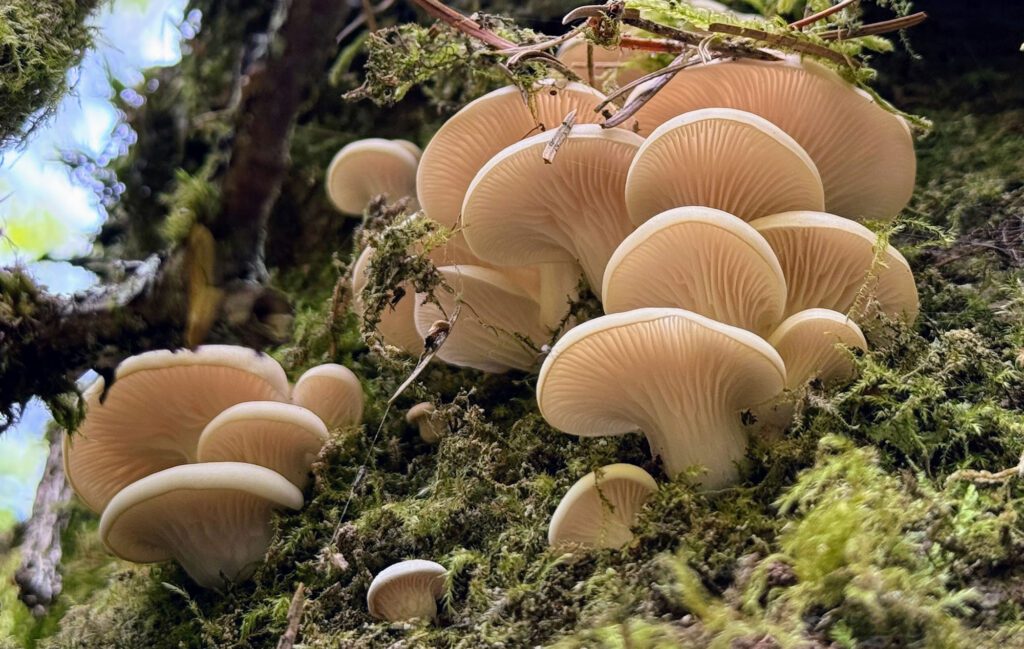
All that said, some additional guidelines will help ensure that you are doing it safely, sustainably, and in a way that doesn’t shortchange other foragers or, in particular, the wildlife that might rely on the nourishment provided by shoreline or forest-born consumables.
If you are foraging for wild edibles, know exactly what you are picking. Take a class or excursion led by a local expert if you can (John Kallas, Wild Food Adventures; or Allana Kieffer, Shifting Tides NW). Guidebooks and apps can be very helpful, as well as Facebook groups specifically created to ID local plants and mushrooms. But bottom line — know for sure!
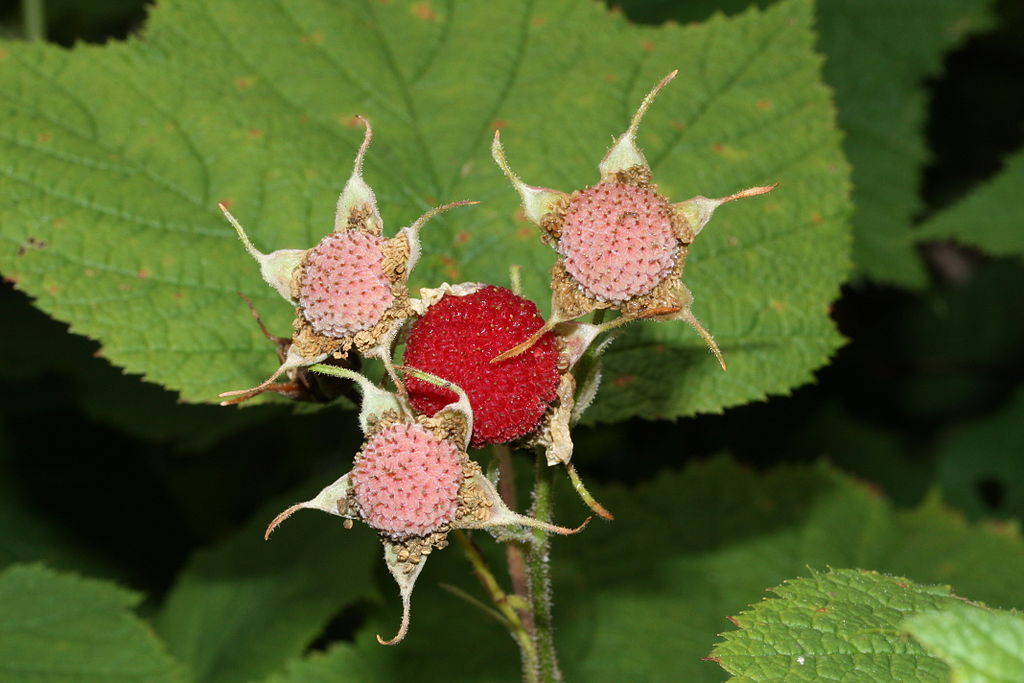
In spring, look for greens like stinging nettles, oxalis (wood sorrel), spruce tips, and miner’s lettuce. Mushrooms like morels and oysters. And the first berries of the year, salmonberries. In the summer, the greens continue, now complemented by a multitude of berries — red huckleberries, salal berries, thimbleberries, and blackberries. In fall, you’ll find chanterelles, a cadre of other mushrooms, and evergreen huckleberries. And some mushrooms like oyster and lobster mushrooms can still be found into the winter.
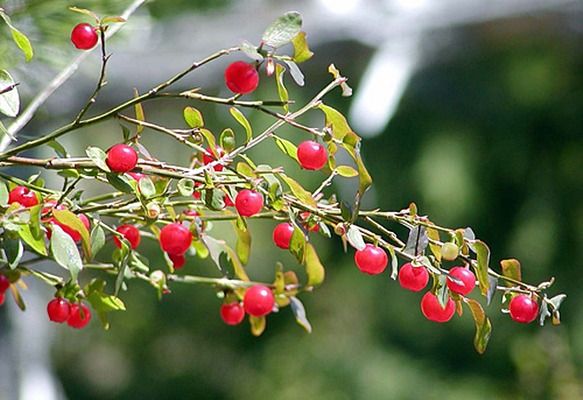
Try to avoid foraging on or in popular trails and parks. Let the kids get a few berries. Only pick a small amount from each plant and never more than 10% of a plant. Regardless, never take more than you need or plan on using. Unless it’s an invasive species, then have at it. Harvest from “clean” areas. Avoid spots with evidence of herbicide spraying or that are clearly in the “dog restroom” zone.
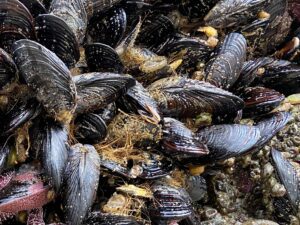 There’s a popular saying. “When the tide is out, the table is set.” And that couldn’t be more true around these parts. Mussels, clams, oysters, crabs, etc, are often abundant, and most certainly delicious! Their harvesting does, however, require special licensure and adherence to limits and restrictions for sustainability and public safety. The online resources below are a good place to start. Now, no matter what time of year you might be reading this, it’s high time to get out into nature and enjoy some of that bounty!
There’s a popular saying. “When the tide is out, the table is set.” And that couldn’t be more true around these parts. Mussels, clams, oysters, crabs, etc, are often abundant, and most certainly delicious! Their harvesting does, however, require special licensure and adherence to limits and restrictions for sustainability and public safety. The online resources below are a good place to start. Now, no matter what time of year you might be reading this, it’s high time to get out into nature and enjoy some of that bounty!
